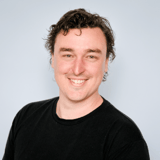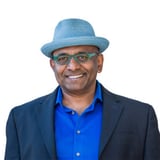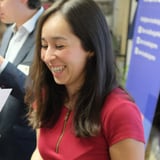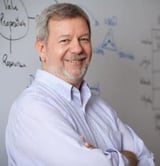
Justin Entzminger
Innovation Practice Director, Bloomberg Center for Public Innovation at Johns Hopkins University

Terrance Smith
Bloomberg Public Innovation Fellow, Johns Hopkins University Bloomberg Center For Public Innovation

Tracy M. Colunga
Civic Engagement Director, Bloomberg Center for Public Innovation at Johns Hopkins University

Mai-Ling Garcia
Digital Practice Director, Bloomberg Center for Public Innovation
Summary
The role of innovator and civic designer is often one that pushes for change, sees things through a different lens. However, people with marginalized identities are often challenged to be seen, heard, and make an impact in work places. We will chat about our challenges as innovators in homogeneous spaces, but also tactics and tools we can use to help diverse groups of people be champions of change in civic spaces. This session will unpack the ways in which our hidden biases can minimize the contributions of designers and how we can uplift groups of people as champions of change.
Key Insights
-
•
Designing in the public sector involves risk aversion, especially for professionals of color who face greater penalties for failure.
-
•
Credentialing and highlighting wins of marginalized designers helps legitimize their authority and fosters trust in civic innovation.
-
•
Tracy became the first Latina Chief Innovation Officer in Long Beach, supported by Mayor Garcia, who prioritized diverse hires to reflect community demographics.
-
•
Embedding designers who share the cultural backgrounds of community members improves resonance and trust in user-centered design efforts.
-
•
Hiring people with lived experience and non-traditional design resumes increases design effectiveness in municipal environments.
-
•
Tools like Post-it notes and digital boards democratize community input by preventing dominant voices from overshadowing others.
-
•
Reconfiguring physical meeting spaces and allowing community members to lead design sessions creates more inclusive innovation environments.
-
•
Traditional public sector job eligibility requirements limit access for diverse, emerging design talent; flexible hiring pathways help mitigate this.
-
•
Intentional recruitment efforts targeting local communities and historically Black colleges and universities build pipelines of diverse innovators.
-
•
Global efforts, such as in Guatemala City, show how user-centered design can be 'tropicalized' to local contexts by adapting language and culture.
Notable Quotes
"City Hall is often risk-averse, and professionals of color face extra penalties for taking risks in their careers."
"Designers must mitigate risk for their projects, but they personally face bigger risks from failure."
"As a young Black man with long hair entering traditional civic spaces, I had to prove my authority through support from leaders like the mayor."
"Mayor Garcia took a chance on me, and I then took chances on young designers who reflected Long Beach’s diverse community."
"Hiring designers who look like the community you serve makes a huge difference in user-centered design outcomes."
"Embedding community members to lead design sessions helps shift power dynamics and surfaces authentic voices."
"Post-its give everyone an equal playing field, preventing dominant voices from overshadowing others in community conversations."
"Traditional job requirements like college degrees and supervisory experience can bar otherwise skilled candidates in the public sector."
"We recruited locally and from historically Black colleges and universities to build a diverse and talented innovation team."
"In Guatemala City, we tropicalize design methods—doing things à la tortres—to fit our unique languages and cultures."
Or choose a question:
















More Videos

"What happens if research does not report into UX? What might happen if we uncouple research from UX?"
Nalini KotamrajuResearch After UX
March 25, 2024

"Society grows great when old people plant trees they know they shall never sit in."
Dean BroadleyNot Black Enough to be White
January 8, 2024

"We’re not going for perfection. We’re going for excellence and change."
Denise Jacobs Nancy Douyon Renee Reid Lisa WelchmanInteractive Keynote: Social Change by Design
January 8, 2024

"Failure isn’t discouraging; it’s an opportunity to learn and improve your approach."
Kim Fellman CohenMeasuring the Designer Experience
October 23, 2019

"What is design’s relationship to power and privilege? Which humans do we center when we say human-centered design?"
George AyeThat Quiet Little Voice: When Design and Ethics Collide
November 16, 2022

"Google’s Material Design has echoes of design decisions flowing through many of their applications."
Nathan CurtisBeyond the Toolkit: Spreading a System Across People & Products
June 9, 2016

"We want to know agents better than they know themselves to drive tailored, contextually relevant solutions."
Greg PetroffThe Compass Mission
March 10, 2021

"Remote research methods can cast a wider net, but some briefs still require on-the-ground presence."
Chloe Amos-EdkinsA Cultural Approach: Research in the Context of Glocalisation
March 27, 2023

"Heat maps showed users clicking on areas they thought were clickable but weren’t, resulting in click rage."
Mackenzie Cockram Sara Branco Cunha Ian FranklinIntegrating Qualitative and Quantitative Research from Discovery to Live
December 16, 2022
Latest Books All books
Dig deeper with the Rosenbot
How can service designers socialize their role effectively within organizations dominated by non-design logics?
How can visualization techniques be used during workshops to manage complexity without too much polish?
Why are service designers uniquely positioned to lead accessibility and inclusion efforts?















